Kingdom Fungi | Division Basidiomycota Rank Species | |
 | ||
Similar Boletus calopus, Butyriboletus appendiculatus, Butyriboletus fechtneri, Hemileccinum impolitum, Suillellus queletii | ||
Boletus albidus caloboletus radicans identification
Caloboletus radicans, also known as the rooting bolete or whitish bolete, is a large, rare ectomycorrhizal fungus found in Europe under deciduous trees in summer and autumn. It has a pale buff or white cap, yellow pores and a stout stipe, and stains blue when bruised or cut. Bitter and inedible, it can cause severe vomiting and diarrhoea when eaten. Until 2014 it was known as Boletus radicans.
Contents
- Boletus albidus caloboletus radicans identification
- Taxonomy
- Description
- Distribution and habitat
- Edibility
- References
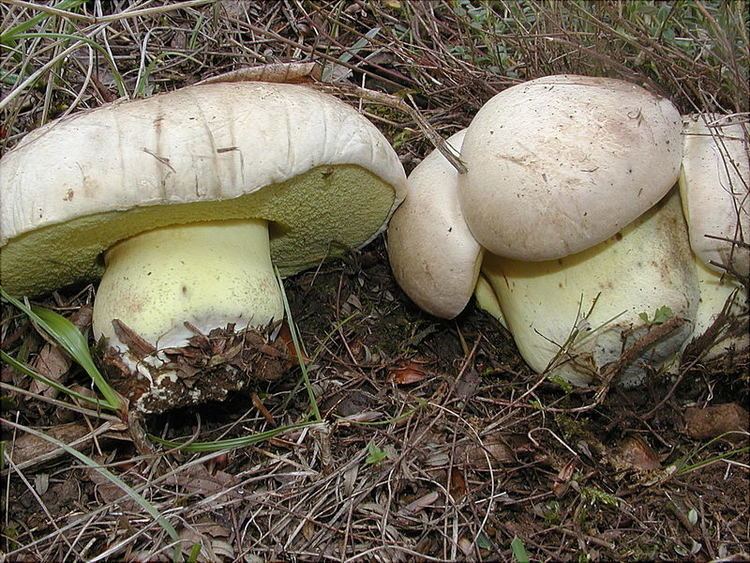
Taxonomy
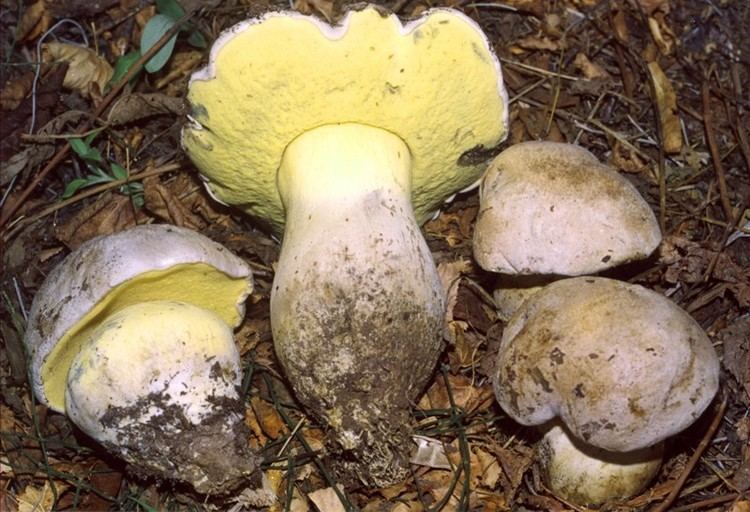
Caloboletus radicans was first described by the pioneering South African-born mycologist Christian Hendrik Persoon in 1801. Its specific epithet is derived from the Latin radic- 'root'. Boletus albidus is a later synonym. The bolete was transferred to the new genus Caloboletus by Italian mycologist Alfredo Vizzini in 2014. It has been given the common name of whitish bolete.
Description
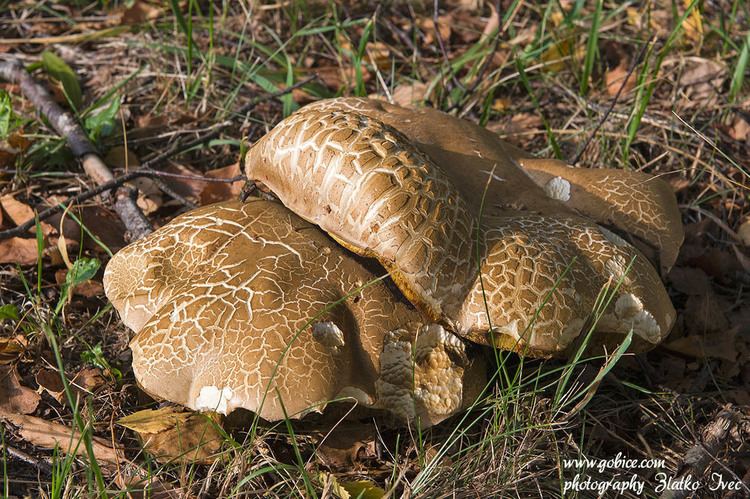
The cap diameter ranges from 7.5–30 cm (3.0–11.8 in) across, and is usually dirty white or buff. Sometimes reminiscent of a large stone from a distance. Downy at first, but cracking at the centre later. Measuring 5–8 cm (2–3¼ in) tall by 3–4 cm (1¼–1⅔ in) wide, the stipe is usually (but not always) swollen, with a rooting base. The apex being bright lemon yellow, and fading below. There is a light straw coloured, sometimes absent reticulation at the top. The flesh is pale yellow, turning white in the cap, and pale blue in the stem when cut. The pores are lemon yellow, small and round, and bruise blue. The spore print is olivaceous walnut-brown.
Distribution and habitat
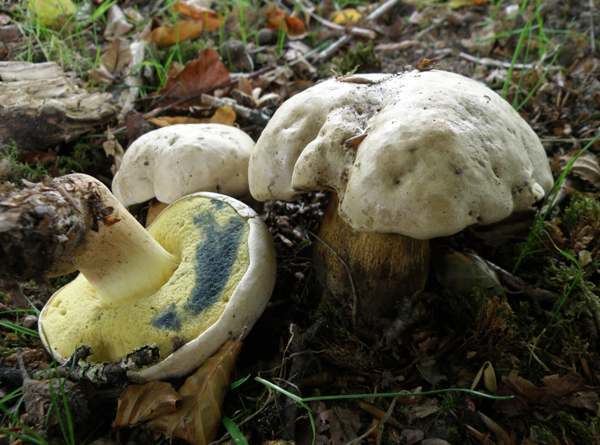
Appearing in summer and autumn, Caloboletus radicans grows with Quercus and Fagus species (Oak and Beech), and is sometimes found in fairly large numbers. Not too fussy, the species grows on both chalk and more acidic soils in southern England and is present elsewhere in Europe.
Edibility
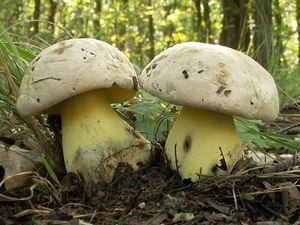
The mushroom is not edible due to its bitterness. A study in 2012 on mushroom poisoning in Switzerland by Katharina M. Schenk-Jaeger and colleagues found Caloboletus radicans to have caused severe gastrointestinal symptoms including recurrent vomiting and bloody diarrhoea.
